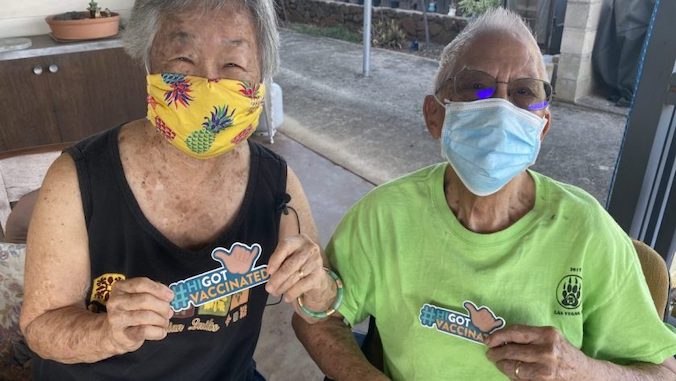
Hawaiʻi is facing a “silver tsunami” according to some policy makers, with the Department of Business, Economic Development and Tourism projecting that residents aged 65 and older will make up 23.8% of the state’s population by 2045.
Incubating solutions to support kūpuna (older adults) health, independence and well-being is the aim of a new joint initiative between the University of Hawaiʻi at Mānoa and the Hawaiʻi Public Health Institute (HIPHI). The Kūpuna Collective will collaborate with organizations across Hawaiʻi’s aging network and includes more than 150 partner organizations that work to improve the health of older adults.
“We want to move Hawaiʻi toward becoming a more age-empowered society,” said Christy Nishita, interim director and gerontologist at UH Mānoa’s Center on Aging within the Thompson School of Social Work & Public Health. “By supporting kūpuna in ways that maximize their health, independence and engagement in their communities, we promote intergenerational connections and greater social inclusion in our islands.”
Nishita is co-founder and co-coordinator of the Kūpuna Collective in partnership with Lindsey Ilagan, Kūpuna Program Manager at HIPHI.
Evolution of Kupuna Collective
The initiative arose from highly successful efforts that began during the early days of the COVID-19 pandemic. A group of 40 nonprofit, government, private and community organizations had joined to form the Kūpuna Food Security Coalition (KFSC), which worked to reduce food insecurity among older adults on Oʻahu. HIPHI served as a backbone organization and as fiscal sponsor, and included the leadership of Derrick Ariyoshi at the City and County of Honolulu’s Elderly Affairs Division and AARP Hawaii. Over the first nine months of its existence, KFSC delivered 1.2 million meals to kūpuna in need statewide.
The UH Mānoa Center on Aging, and particularly with the help of doctoral student Jinyoung Lee in the Office of Public Health Studies, was part of the effort and tracked metrics on the meal deliveries and other services to assess the group’s impact. It became clear that food insecurity was just one problem that older adults in Hawaiʻi face.
“As we gathered more data, we realized that many of the issues that have an impact on kūpuna health are linked,” Lee said.
The KFSC merged with other coalitions including Age-Friendly Honolulu, Kupuna Vaccine Outreach Group and the Kūpuna Digital Inclusion Group to form the Kūpuna Collective. The network has since grown to include more than 150 partners that all aim to help Hawaiʻi‘s older adults. The formation of the Kūpuna Collective was a natural evolution, Nishita said, as the partners increasingly recognized the intersecting social drivers of health that impact kūpuna well-being and ability to age-in-place.
“The Kūpuna Collective provides a platform to discuss critical issues and a place to incubate new ideas to create better programs and systems of care,” Nishita said. “We want to drive innovative solutions that support and empower kūpuna in Hawaiʻi.”
Tracking data to assess impact
The Collective’s co-coordinators, UH Mānoa Center on Aging and HIPHI, will support its members through regular convenings to identify priority issues, foster collaboration, leverage resources, and pilot integrated programs and services for kūpuna.
The UH Mānoa Center on Aging continues to track data on the initiative. The data are used to conduct research, support program strategy, develop innovative approaches, and assess the program’s collective impact. Nishita noted that both quantitative as well as qualitative information about the program’s impact are gathered.
“Collecting stories from the kūpuna who we help is critical in growing and sustaining our efforts,” she said.

